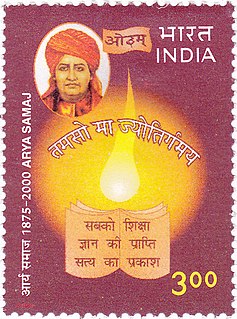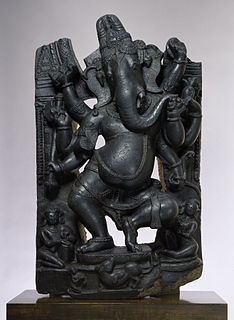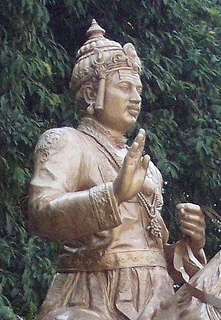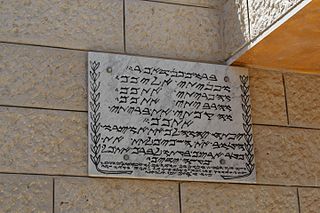 W
WArya Samaj is a monotheistic Indian Hindu reform movement that promotes values and practices based on the belief in the infallible authority of the Vedas. The samaj was founded by the sannyasi (ascetic) Dayanand Saraswati on 10 April 1875.
 W
WAtenism, the Aten religion, the Amarna religion, or the "Amarna heresy" was a religion and the religious changes associated with the ancient Egyptian Eighteenth Dynasty pharaoh Akhenaten. The religion centered on the cult of the god Aten, depicted as the disc of the Sun and originally an aspect of the traditional solar deity Ra. In the 14th century BC, Atenism was Egypt's state religion for about 20 years, before subsequent rulers returned to the traditional polytheistic religion and the pharaohs associated with Atenism were erased from Egyptian records.
 W
WAn Azali or Azali Bábí is a follower of the monotheistic religion of Subh-i-Azal and the Báb. Early followers of the Báb were known as Bábís; however, in the 1860s a split occurred after which the vast majority of Bábís followed Mirza Husayn ʻAli, known as Baháʼu'lláh, and became known as Baháʼís, while the minority who followed Subh-i-Azal came to be called as Azalis.
 W
WThe Baháʼí Faith is a relatively new religion teaching the essential worth of all religions and the unity of all people. Established by Baháʼu'lláh in the 19th century, it initially developed in Iran and parts of the Middle East, where it has faced ongoing persecution since its inception. The religion is estimated to have over five million adherents, known as Baháʼís, spread throughout most of the world's countries and territories.
 W
WIn Hinduism a bhāgavata, is a devotee, worshipper or follower of Bhagavant namely Vishnu in his personal aspect as Lord Krishna. The form of worship is called bhakti which has the meaning of 'adoration'.
Caodaism is a monotheistic syncretic new religious movement officially established in the city of Tây Ninh in southern Vietnam in 1926. The full name of the religion is Đại Đạo Tam Kỳ Phổ Độ.
 W
WCheondoism is a 20th-century Korean Pantheistic religion, based on the 19th-century Donghak religious movement founded by Ch'oe Che-u and codified under Son Pyŏng-Hi. Cheondoism has its origins in the peasant rebellions which arose starting in 1812 during the Joseon dynasty.
 W
WChristian deism is a standpoint in the philosophy of religion stemming from Christianity and Deism. It refers to a Deist who believes in the moral teachings—but not the divinity—of Jesus. Corbett and Corbett (1999) cite John Adams and Thomas Jefferson as exemplars.
 W
WDruze are members of an Arabic-speaking esoteric ethnoreligious group originating in Western Asia. They practice Druzism, an Abrahamic, monotheistic, syncretic, and ethnic religion based on the teachings of Hamza ibn Ali ibn Ahmad and the sixth Fatimid caliph, al-Hakim bi-Amr Allah, and ancient Greek philosophers like Plato, Aristotle, Pythagoras, and Zeno of Citium. Adherents of the Druze religion are called The People of Monotheism (Al-Muwaḥḥidūn).
 W
WGanapatya is a denomination of Hinduism that worships Ganesha as the Saguna Brahman.
 W
WGaudiya Vaishnavism, also known as Bengali Vaishnavism, Chaitanya Vaishnavism, the Chaitanya/Gaudiya Sampradaya is a Vaishnava Hindu religious movement inspired by Chaitanya Mahaprabhu (1486–1534) in India. "Gaudiya" refers to the Gaura or Gauḍa region of Bengal, with Vaishnavism meaning "the worship of Vishnu". Specifically, it is part of Krishnaism—Krishna-centric Vaishnavite traditions. Its theological basis is primarily that of the Bhagavad Gita and Bhagavata Purana, as interpreted by early followers of Chaitanya, such as Sanatana Goswami, Rupa Goswami, Jiva Goswami, Gopala Bhatta Goswami and others.
 W
WHypsistarians, i.e. worshippers of the Hypsistos, and similar variations of the term first appear in the writings of Gregory of Nazianzus and Gregory of Nyssa, about AD 374. The term has been linked to a body of inscriptions that date from around 100 AD to around 400 AD, mostly small votive offerings, but also including altars and stelae, dedicated to Theos Hypsistos, or sometimes simply Hypsistos, mainly found in Asia Minor and the Black Sea coasts that are today part of Russia.
 W
WJudaism is an Abrahamic, monotheistic, and ethnic religion comprising the collective religious, cultural, and legal tradition and civilization of the Jewish people, also sometimes called Israelites. Judaism is considered by religious Jews to be the expression of the covenant that God established with the Children of Israel. It encompasses a wide body of texts, practices, theological positions, and forms of organization. The Torah is part of the larger text known as the Tanakh or the Hebrew Bible, and supplemental oral tradition represented by later texts such as the Midrash and the Talmud. With between 14.5 and 17.4 million adherents worldwide, Judaism is the tenth largest religion in the world.
 W
WKaumaram is a Hindu denomination that focuses on the deity of love and war Kumara, also known as Murugan, Kandan, or Kadamban, or Kartikeya. Most devotees of Kumara also revere members of his family: Parvati, Shiva, and Ganesha. The important theological texts relating to Kumara are a part of the Shaiva agama canon. This sub-tradition is found among the Tamils, Kannada, Vedda in South India, Sri Lanka, and among the Tamil diaspora worldwide. The love story of Kumara/Murugan and his wife Valli, a girl from a local tribe, is immensely popular in Tamil Nadu, where Kumara acquired the status of a national God.
 W
WLingayatism is a Shaivite Hindu religious tradition in India. Initially known as Veerashaivas, since the 12th century adherents of this faith are known as Lingayats. The terms Lingayatism and Veerashaivism have been used synonymously, but Veerashaivism may refer to the broader Veerashaiva philosophy which predates Lingayatism, to the historical community now called Lingayats, and to a contemporary (sub)tradition within Lingayatism with Vedic influences.
 W
WMandaeism or Mandaeanism, also known as Sabianism, is a Gnostic, monotheistic and ethnic religion. Its adherents, the Mandaeans, revere Adam, Abel, Seth, Enos, Noah, Shem, Aram, and especially John the Baptist. The Mandaeans speak an Eastern Aramaic language known as Mandaic. The name 'Mandaean' is said to come from the Aramaic manda meaning knowledge. Within the Middle East, but outside of their community, the Mandaeans are more commonly known as the Arabic: صُبَّة Ṣubba or Sabians. The term Ṣubba is derived from the Aramaic root related to baptism, the neo-Mandaic is Ṣabi. In the Quran, the Sabians are mentioned three times, alongside Jews and Christians. Occasionally, Mandaeans are called "Christians of Saint John".
 W
WRastafari, also known as the Rastafari movement or Rastafarianism, is a religion that developed in Jamaica during the 1930s. It is classified as both a new religious movement and a social movement by scholars of religion. There is no central authority in control of the movement and much diversity exists among practitioners, who are known as Rastafari, Rastafarians, or Rastas.
 W
WThe Samaritan religion, also known as Samaritanism, is an Abrahamic, monotheistic, and ethnic religion of the Samaritan people. The Samaritans adhere to the Samaritan Torah, which they believe is the original, unchanged Torah, as opposed to the Torah used by Jews. In addition to the Samaritan Torah, Samaritans also revere their version of the Book of Joshua and recognize some Biblical figures, such as Eli.
 W
WSeichō no Ie (Japanese: 生長の家, "House of Growth") is a syncretic, monotheistic, New Thought Japanese new religion that has spread since the end of World War II. It emphasizes gratitude for nature, the family, ancestors and, above all, religious faith in one universal God. Seichō no Ie is the world's largest New Thought group. By the end of 2010 it had over 1.6 million followers and 442 facilities, mostly located in Japan.
 W
WShaivism is one of the major Hindu traditions that worships Shiva, also called Rudra, as the Supreme Being. One of the largest Hindu denominations, it incorporates many sub-traditions ranging from devotional dualistic theism such as Shaiva Siddhanta to yoga-oriented monistic non-theism such as Kashmiri Shaivism. It considers both the Vedas and the Agama texts as important sources of theology.
 W
WShaktism is one of several major Hindu denominations, wherein the metaphysical reality is considered metaphorically a woman and Shakti (Mahadevi) is regarded as the supreme godhead. It includes many goddesses, all considered aspects of the same supreme goddess. Shaktism has different sub-traditions, ranging from those focused on gracious Parvati to that of fierce Kali.
 W
WTengrism is an ancient ethnic and state Turko-Mongolic religion originating in Central Asia and the Eurasian steppes, based on folk shamanism, monotheistic at the imperial level, and generally centered around the titular sky god Tengri. The term also describes several contemporary Turko-Mongolic native religious movements and teachings. All modern adherents of "political" Tengrism are monotheists.
 W
WTenrikyo is a Japanese new religion which is neither strictly monotheistic nor pantheistic, originating from the teachings of a 19th-century woman named Nakayama Miki, known to her followers as Oyasama. Followers of Tenrikyo believe that God of Origin, God in Truth, known by several names including "Tsukihi," "Tenri-Ō-no-Mikoto" and "Oyagamisama " revealed divine intent through Miki Nakayama as the Shrine of God and to a lesser extent the roles of the Honseki Izo Iburi and other leaders. Tenrikyo's worldly aim is to teach and promote the Joyous Life, which is cultivated through acts of charity and mindfulness called hinokishin.
 W
WYarsanism, Ahl-e Haqq or Kaka'i, is a syncretic religion founded by Sultan Sahak in the late 14th century in western Iran. The total number of followers of Yarsanism is estimated to be just over half a million in Iran and Iraq who are mostly Kurds from the Guran, Sanjâbi, Kalhor, Zangana and Jalalvand tribes. Turkic Yarsan enclaves also exist in Iran.
 W
WYazdânism, or the Cult of Angels, is a proposed pre-Islamic Mithraic religion of the Kurds. The term was introduced and proposed by Kurdish and Belgian scholar Mehrdad Izady to represent what he considers the "original" religion of the Kurds.
 W
WYazidism or Sharfadin is a monotheistic ethnic religion that has roots in a western Iranic pre-Zoroastrian religion directly derived from the Indo-Iranian tradition, although other, less common and more outdated narratives link the religion to Zoroastrianism and even Ancient Mesopotamian religions. Yezidism is followed by the mainly Kurmanji-speaking Yazidis and is based on belief in one God who created the world and entrusted it into the care of seven Holy Beings, known as Angels. Preeminent among these Angels is Tawûsê Melek, who is the leader of the Angels and who has authority over the world.
Zurvanism is a hypothetical religious movement of Zoroastrianism in which the divinity Zurvan is a First Principle who engendered equal-but-opposite twins, Ahura Mazda and Angra Mainyu. Zurvanism is also known as "Zurvanite Zoroastrianism", and may be contrasted with Mazdaism.